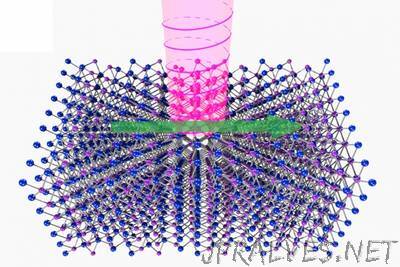
“Mid-infrared wavelengths of light are invisible to the eye but can be useful for a number of technologies, including night vision, thermal sensing, and environmental monitoring. Now, a new phenomenon in an unconventional metal, found by physicists at MIT and elsewhere, could provide a new way of making highly sensitive detectors for these elusive wavelengths. The phenomenon is closely related to a particle that has been predicted by high-energy physicists but never observed. Physicists group all the fundamental particles in nature into two categories, fermions and bosons, according to a property called spin. The fermions, in turn, have three types: Dirac, Majorana, and Weyl. Dirac fermions include the electrons in regular metals such as copper or gold. The other two are unconventional particles that can give rise to strange and fundamentally new physics, which potentially can be used to build more efficient circuits and other devices. The Weyl fermion was first theorized almost a century ago by German physicist Hermann Weyl. Even though its existence is posited as part of the equations that form the widely accepted Standard Model of subatomic physics, Weyl fermions have never actually been observed experimentally. The theory predicts that they should move at the speed of light, and, at the same time, spin about the direction of motion. They come in two varieties depending on whether their rotation around the direction of motion is clockwise or counterclockwise. This property is known as the handedness, or chirality, of Weyl fermions. Even though Weyl fermions have never been observed directly, researchers have recently observed a phenomenon that mimics essential aspects of their theorized properties, in a class of unconventional metals known as Weyl semimetals. One remaining challenge was to experimentally measure the chirality of these Weyl fermions, which evaded detection from most standard experimental techniques. In a paper published in the journal Nature Physics, an MIT team was able to measure Weyl fermion chirality by using circularly polarized light. This work was done by MIT postdocs Qiong Ma and Su-Yang Xu; physics professors Nuh Gedik, Pablo Jarillo-Herrero, and Patrick Lee; and eight other researchers at MIT and other universities in the U.S., China, and Singapore.”
